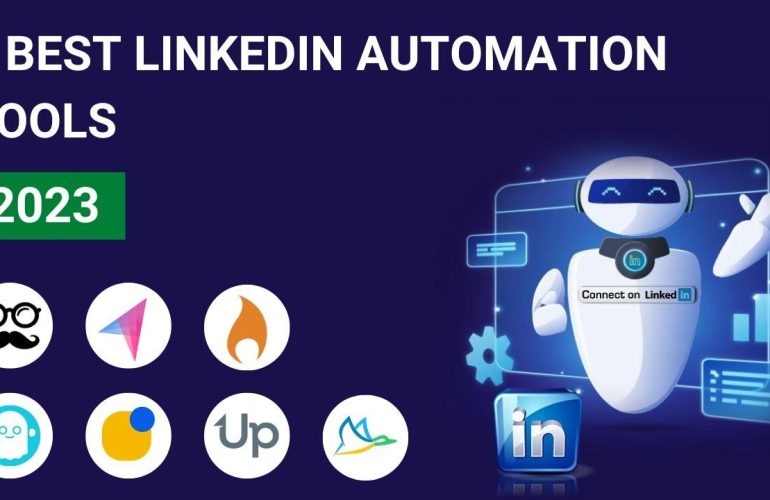In today’s competitive digital landscape, the ability to harness data effectively is paramount for any professional looking to enhance their lead generation strategies. LinkedIn, as a leading platform for B2B networking, offers a wealth of analytics that, when leveraged correctly, can significantly improve an organization’s outreach efforts. This article delves into the intricacies of LinkedIn analytics, providing a comprehensive analysis of the metrics that matter most for understanding audience engagement and refining targeting strategies. By exploring the various tools and techniques available, we aim to equip marketers and sales professionals with the insights necessary to turn data into actionable strategies, ultimately transforming their approach to lead generation. As we navigate the complexities of these analytics, we will uncover how informed decision-making can lead to more effective campaigns, strengthening connections and driving sustainable growth in an increasingly data-driven world.
Table of Contents
- Understanding LinkedIn Analytics Metrics for Lead Generation Optimization
- Identifying Key Audience Segments Through LinkedIn Insights
- Leveraging Content Performance Data to Refine Marketing Strategies
- Implementing A/B Testing to Enhance Engagement and Conversion Rates
- In Conclusion
Understanding LinkedIn Analytics Metrics for Lead Generation Optimization
LinkedIn Analytics offers a wealth of insights that are crucial for optimizing lead generation efforts. By analyzing metrics such as impressions, click-through rates (CTR), and engagement levels, businesses can gain a clearer picture of how well their content resonates with their target audience. These metrics help identify which posts are engaging potential leads, allowing for the fine-tuning of content strategies. Focusing on the following key areas can sharpen your lead generation tactics:
- Content Performance: Track which types of posts generate the most engagement, helping determine the topics that spark interest.
- Audience Demographics: Understand who is interacting with your content through insights on industry, job function, and location.
- Lead Source Tracking: Identify the origin of leads, enabling effective optimization of outreach strategies.
Furthermore, employing LinkedIn’s metrics aids in A/B testing your content to see which formats yield the best results. By leveraging data-driven decisions, companies can enhance their content distribution strategy. Below is a simplified table showcasing how different content types can influence engagement, leading to more qualified leads:
| Content Type | Engagement Rate (%) | Average Leads Generated |
|---|---|---|
| Infographics | 25 | 150 |
| Articles | 18 | 100 |
| Videos | 30 | 200 |
| Webinars | 35 | 250 |
Utilizing this data not only aids in refining future content strategies but also ensures engagement translates into tangible results, maximizing lead generation efforts on the platform.
Identifying Key Audience Segments Through LinkedIn Insights
Utilizing LinkedIn Insights empowers businesses to pinpoint their most engaged audience segments effectively. By analyzing the data collected from your posts and engagement metrics, you can identify trends that help refine your targeting strategy. Consider focusing on the following factors:
- Industry: Determine which sectors are interacting with your content the most.
- Job Titles: Understand which professional roles find your offerings appealing, guiding you to tailor your messaging.
- Location: Recognize geographic areas that exhibit higher engagement, allowing for location-based strategies.
LinkedIn’s analytics provide a treasure trove of demographic information that can lead to highly targeted marketing efforts. By creating detailed personas based on the data, you can enhance your outreach campaigns effectively. Here’s a simplified representation of how different segments may consume your content:
| Audience Segment | Engagement Rate | Preferred Content Type |
|---|---|---|
| Marketing Professionals | 25% | Infographics |
| Software Engineers | 30% | Technical Articles |
| HR Executives | 20% | Case Studies |
This structured approach enables you to align content creation efforts with the preferences of your audience, ensuring higher engagement and conversion rates. By continuously monitoring these insights, you can adjust your strategies in real-time, thereby enhancing lead generation outcomes consistently.
Leveraging Content Performance Data to Refine Marketing Strategies
To successfully enhance lead generation efforts, it is essential to analyze content performance data meticulously. By diving deep into metrics such as engagement rates, click-through rates (CTR), and conversion rates, marketers can discern which content resonates best with their target audience. Identifying high-performing content allows for strategic optimization, where elements like messaging, visuals, and posting times can be adjusted to amplify effectiveness. Consider segmenting audience data to better understand demographic preferences, which can lead to more tailored marketing strategies. This analytical approach not only uncovers successful tactics but also highlights underperforming areas that require reshaping.
Moreover, implementing A/B testing on various content types—such as articles, infographics, and videos—can provide actionable insights into audience preferences. This technique allows marketers to experiment with different headlines, formats, and calls-to-action, ultimately informing future content development. The following table outlines key performance indicators (KPIs) to track when refining your marketing strategy:
| Key Performance Indicator | Purpose | Actionable Insight |
|---|---|---|
| Engagement Rate | Measures audience interaction | Optimize content style and posting frequency |
| Click-Through Rate (CTR) | Evaluates effectiveness of links | Refine CTAs and offer placements |
| Conversion Rate | Tracks lead generation success | Adjust landing pages and content calls |
Implementing A/B Testing to Enhance Engagement and Conversion Rates
A/B testing serves as a powerful mechanism for refining your LinkedIn strategies and boosting both engagement and conversion rates. By carefully isolating variables such as post design, call-to-action wording, and audience segmentation, you can derive actionable insights to elevate user interactions. Consider implementing *multiple iterations* of a single campaign to gauge what resonates best with your audience. Here are some core elements to focus on:
- Content Variations: Experiment with different formats such as articles, infographics, and slideshows.
- Timing: Test different times of day and days of the week to identify optimal engagement windows.
- Target Audience: Segment your audience based on industry, job title, or company size to tailor content effectively.
Moreover, proper analysis of the results is crucial for refining your approach. Utilize LinkedIn’s built-in analytics tools in conjunction with A/B testing data to assess performance. You can easily visualize results through comparative tables like the one below:
| Test Variable | Click-Through Rate (CTR) | Conversion Rate |
|---|---|---|
| Post A – Visual Content | 5.2% | 3.1% |
| Post B - Text-Heavy Content | 3.7% | 1.5% |
| Post C – Video Content | 7.4% | 4.6% |
This structure will help you pinpoint which elements contribute most effectively to engagement and conversions, allowing you to optimize future campaigns with precision.
In Conclusion
the power of LinkedIn Analytics in fine-tuning your lead generation strategies cannot be overstated. As we have explored throughout this article, the platform offers a wealth of data that, when effectively harnessed, can illuminate the preferences and behaviors of your target audience. By meticulously analyzing engagement metrics, demographic insights, and content performance, professionals can craft tailored lead generation campaigns that resonate more deeply with potential clients.
Moreover, the continuous iteration based on these analytics leads to a more agile marketing approach, allowing businesses to pivot strategies in response to real-time data. This analytical rigor not only enhances the quality of leads but also significantly improves conversion rates, fostering a more robust and sustainable growth trajectory.
As we move forward in an increasingly competitive landscape, embracing these data-driven insights will separate successful organizations from those that merely tread water. The future of lead generation lies not just in traditional outreach but in insightful analysis of digital engagement. As you apply the principles discussed here, remember that the goal is not just to generate leads, but to cultivate meaningful connections that translate into lasting business relationships. Let LinkedIn be your guide in this venture—where data meets opportunity, success is never far behind.






